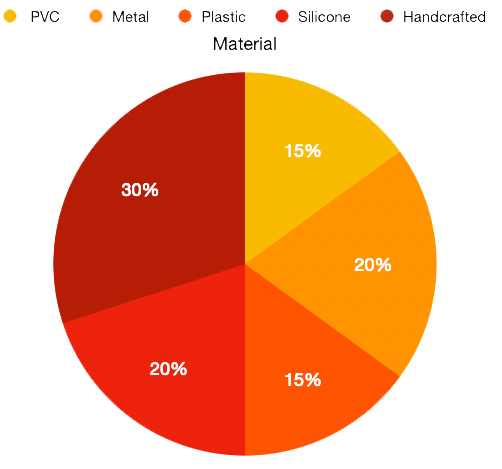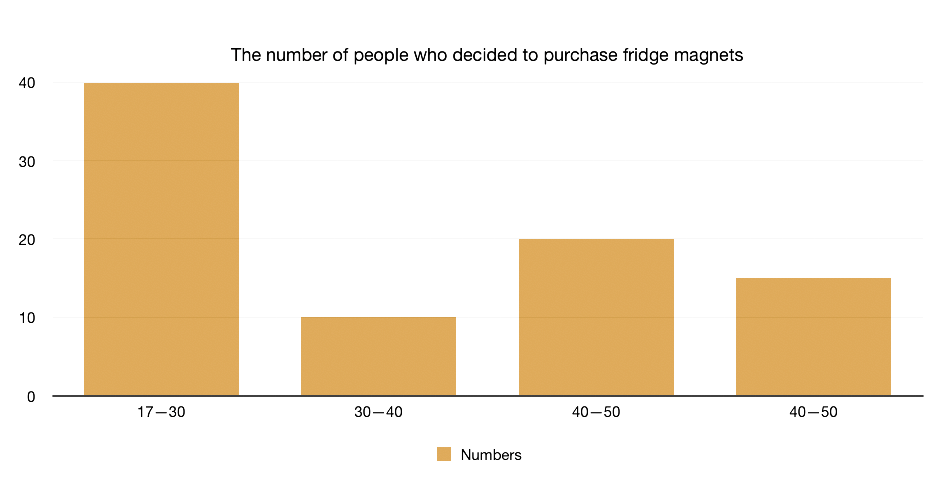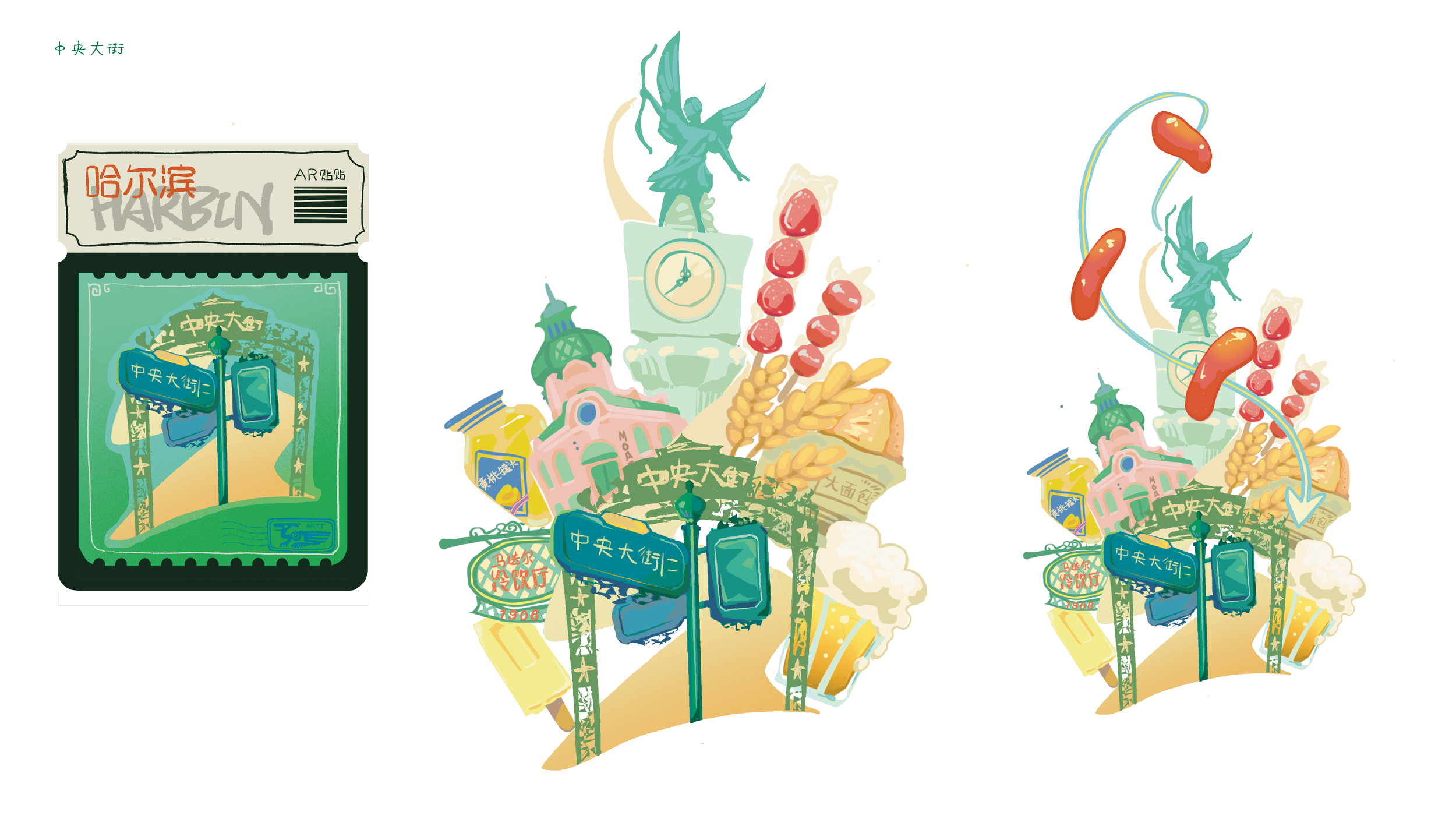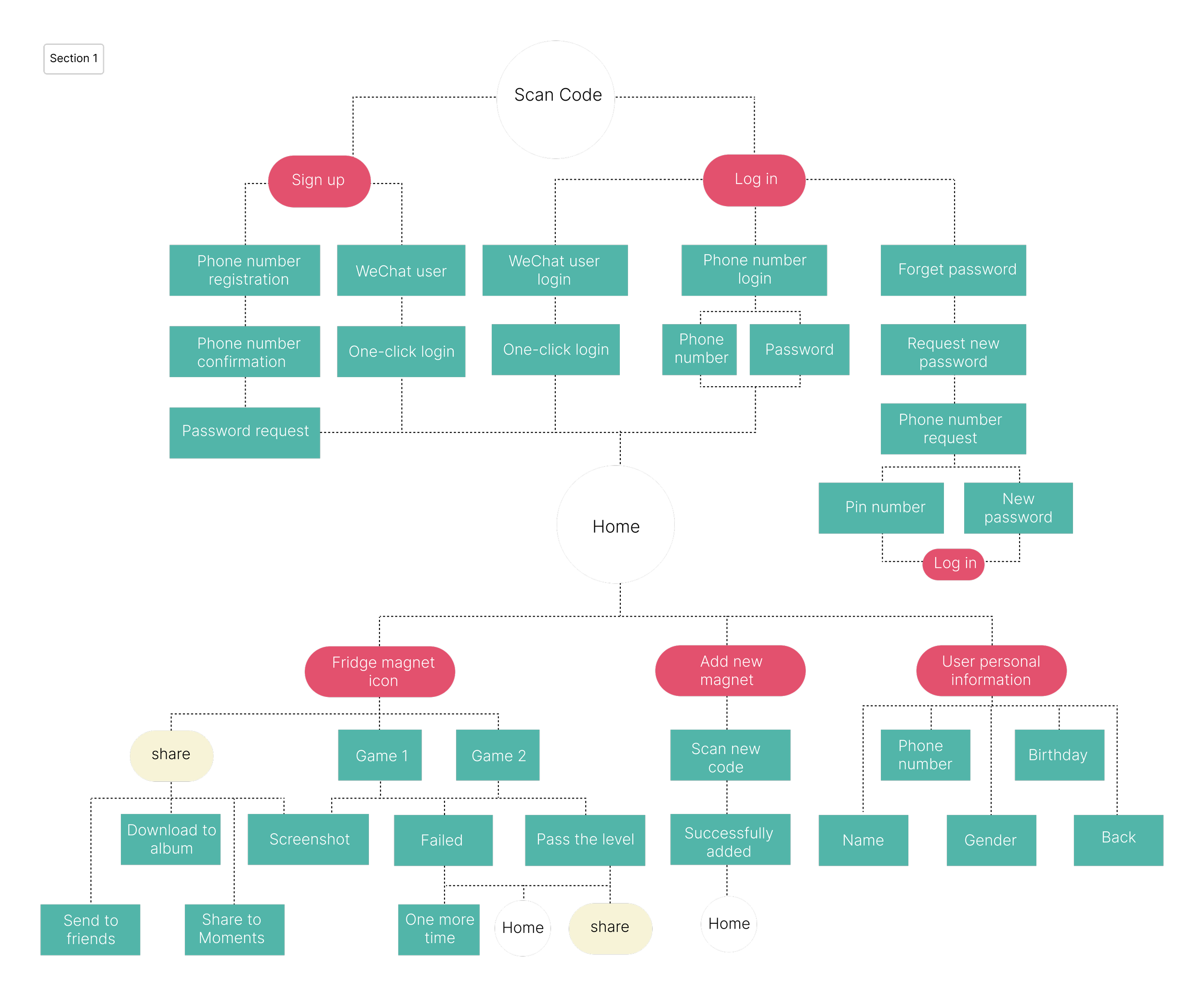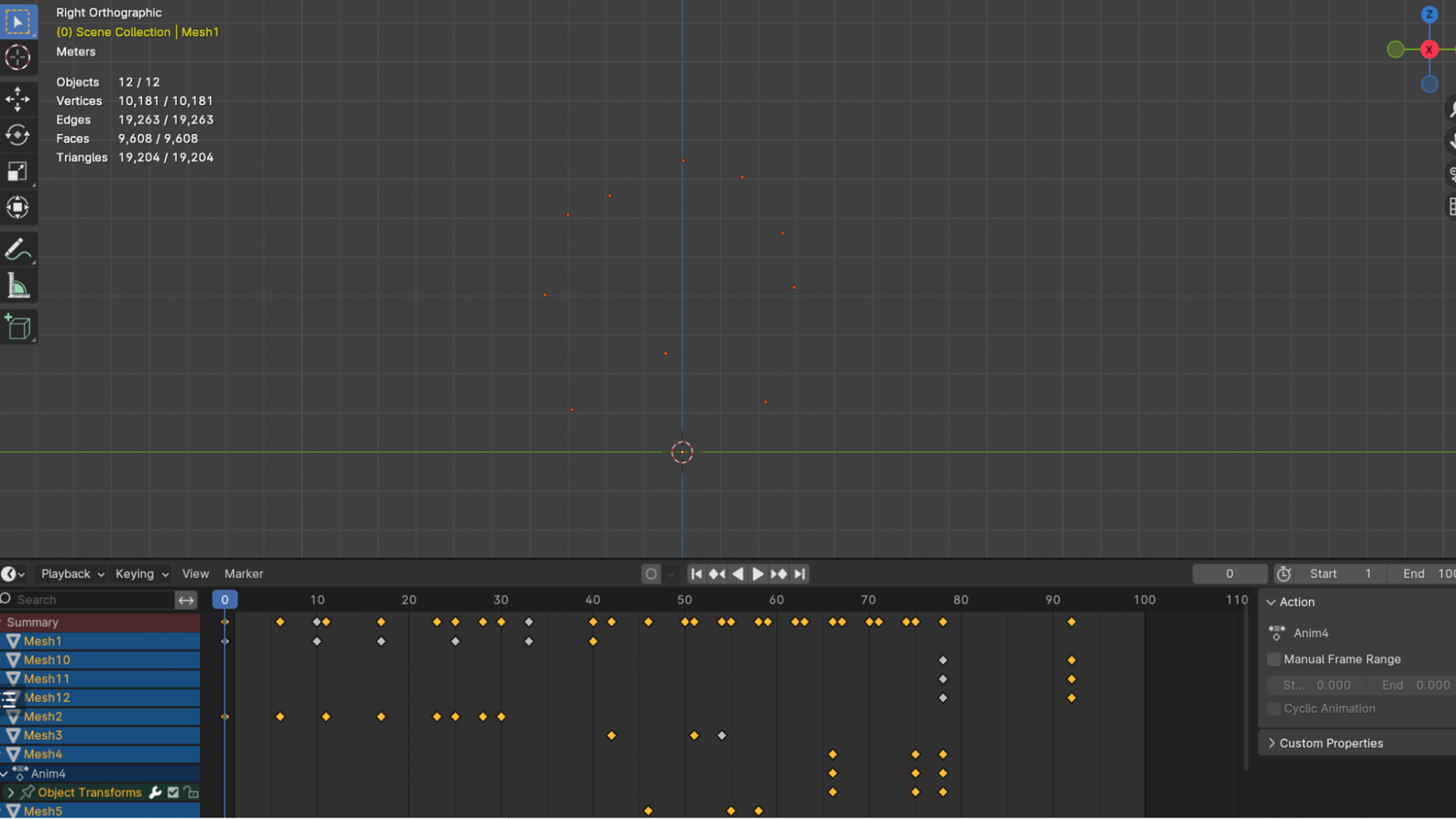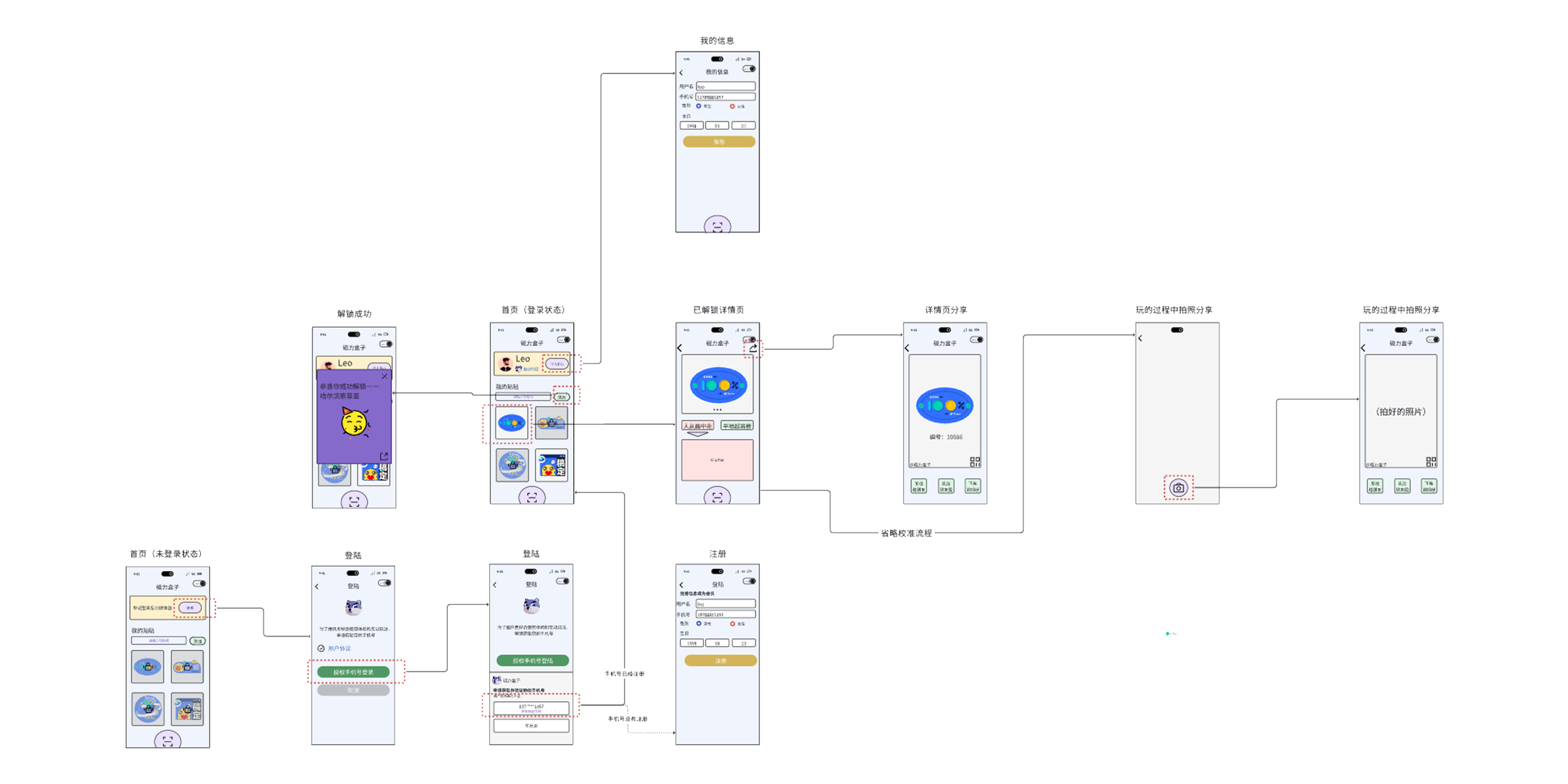Harbin Souvenir
Team Project
Team Size: 6 people
Mentor: Min Pan
Duration: 2024.04-2024.08
Tools: Photoshop, Blender, Weixin Developer Tools
My Contribution:
Ideation,Interaction Design
The materials that people chose
Conclusion:
Secondary Research
Souvenir Design
Design fridge magnets based on the tourist attractions and cities.
survey results:
Central Avenue
User Flow
Here is the part I am responsible for, which relates to the WeChat Mini Program. This section includes the flowchart, detailing the operational process after the user logs into the webpage.
The main section is divided into two parts. One part is scanning the fridge magnet to log into the account, and the other part is scanning the QR code to play the game, as well as the sharing interface.
Idea was to create a product that could promote city culture. After brainstorming, we decided to choose magnets. Further market research revealed that combining AR and gaming elements could make the product more appealing to tourists.
We chose Harbin as the first city based on recent travel hotspots and production timelines. Harbin is a city in northern China that attracts the most tourists during winter. Among its famous attractions, we selected Central Avenue and St. Sophia Cathedral.
Considering the integration of the product with the AR game, we decided that users would scan a QR code on the product packaging to access a related WeChat mini program, which would lead them to the game interface. In this project, I am mainly responsible for the visual design part, including the product packaging design and the UI/UX of the program.
In a survey of 200 individuals aged 17 to 60, it was found that fridge magnets are most popular among the younger group, particularly those aged 17-29. Interest among those over 30 drops significantly, with only 15% considering a purchase. Most respondents (63%) prefer magnets made from substantial materials like metal or handcrafted ceramics, valuing their quality and authenticity. Nearly 90% avoid newer materials like acrylic, seeing them as cheap. One 24-year-old traveler noted that she buys fridge magnets partly to "show off" her travel history, displaying them as proof of her adventures.The primary target audience for this project consists of young individuals, as research shows that refrigerator magnets are often purchased for their sentimental and commemorative value, particularly as mementos from trips or special events. To cater to this demographic, the software design adopts a more dynamic and energetic aesthetic, incorporating vibrant and youthful color schemes that resonate with their tastes. This approach not only enhances the visual appeal but also creates a fun and engaging user experience, aligning with the playful and nostalgic nature of refrigerator magnets.
St. Sophia Cathedral
Low Fidelity Prototype
The initial design represents the first version, laying out the basic structure of the entire process. It serves as the foundational blueprint for the overall design flow.
Animation
These are design sketches created by team members. First image is of Central Avenue, next two are sketches of St. Sophia Cathedral.
The design for Central Avenue incorporates Harbin's traditional foods, such as canned yellow peaches, candied hawthorns. The design for St. Sophia Cathedral incorporates Harbin's city flower, Lilac, and the scene of pigeons surrounding the cathedral.
In the process of designing the game, we decided to create two types of games.
First game allows the character to walk within the AR scene after entering the AR interface.
Second game is a "Spot the difference", where we designed three differences based on the modeling for players to find. Additionally, we designed different interactive animations for the AR scene itself.
3D Design
Models of two scenes created in Blender, along with the debugging of their animation effects.
How many people will buy the magnets
We designed three interactive animations for Central Avenue. First is Cupid in the top right corner; when players click on it, Cupid's arrow shoots out a heart. The second animation occurs when players click on the ice cream and the candied hawthorns; an animation of the food being eaten will appear. The third animation happens when players click on the wheat; wheat grains will fall.
We also designed three interactive animations for St. Sophia Cathedral. When players click on the pigeons, the flock will randomly fly around the cathedral. Clicking on the petals will cause them to fall. Clicking on the bell in the bell tower will make the bell's clapper swing left and right.
After discussions with the group, we revised the design, and the updated version is shown below, featuring a green color scheme. We decided to use white, green, and orange as the primary design elements. The process was simplified, shifting the design focus more toward gameplay mechanics.




